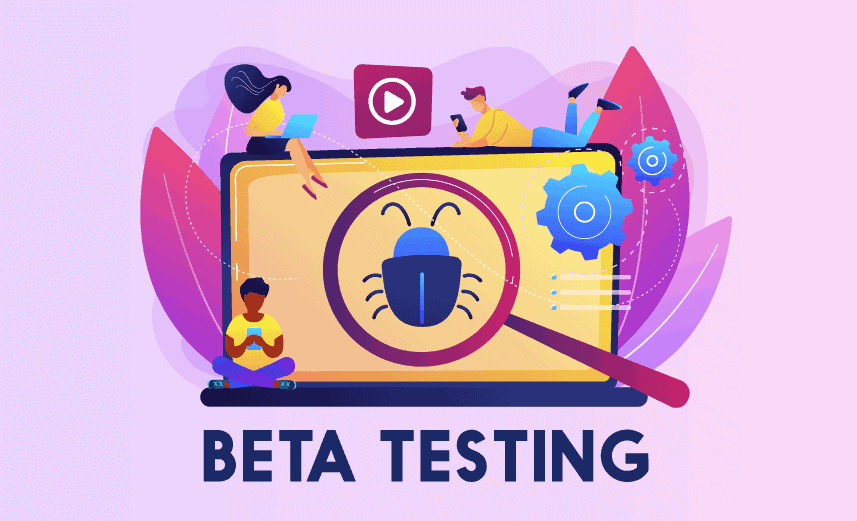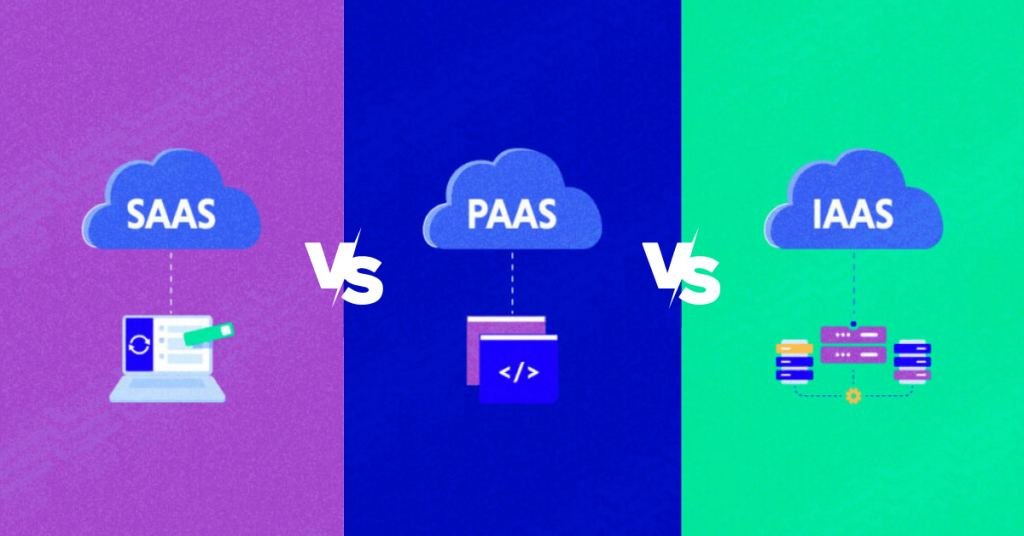Welcome to our comprehensive guide on beta testing best practices for SaaS products! In today’s fast-paced digital landscape, beta testing plays a crucial role in the success of software-as-a-service (SaaS) companies. It provides an opportunity to gather user feedback, uncover bugs, and refine product offerings before they are launched to the wider market.
In this article, we will delve into the key strategies and practices that will help you conduct effective beta testing for your SaaS products. Whether you’re new to beta testing or looking to enhance your existing processes, this guide will provide you with valuable insights and actionable steps to optimize your beta testing program. But before moving straight to the best practices, let’s first know about beta testing and its importance for SaaS products.
What Is Beta Testing For SaaS Products?
Beta testing for SaaS products is a critical phase where real users test the software before its official release. Beta testers, representing the target audience, provide valuable feedback on performance, usability, and user experience. The software is typically in its final stages but may have known issues or incomplete features. Testers use the software in real-world scenarios and report bugs and glitches while offering suggestions for improvement. This feedback helps the development team prioritize bug fixes, refine features, and enhance software quality.
Best practices include selecting diverse testers, providing clear instructions, maintaining open communication, and incentivizing participation. Beta testing ensures a smoother product launch, with optimized performance and improved user satisfaction. To get your software or application tested you can make use of beta testing platforms.
For example, BufferApps is one the best SaaS launch platform that offers beta tests for free. By launching your product at BufferApps you can gain more exposure, real user feedback, early adopters and customers for your SaaS products. This helps you to validate your product before the final launch.
Why Beta Testing For SaaS Products Is Important?
Beta testing for SaaS products is crucial for success. Here’s why:
- User Feedback: Real users provide valuable feedback on performance, usability, and experience, ensuring a product that meets their needs.
- Bug Detection: Beta testers uncover bugs and glitches that may have been missed during internal testing, leading to more stable and reliable software.
- Usability Improvement: Testers offer insights into the user interface and suggest improvements, resulting in a more intuitive and user-friendly product.
- Customer Satisfaction: By involving users early on, SaaS companies demonstrate a commitment to meeting their expectations, increasing overall satisfaction.
- Competitive Edge: Beta testing allows for refinement and optimization, giving the product a competitive advantage in the market.
- Early Adoption: Engaging beta testers can create brand advocates who spread positive word-of-mouth, attracting early adopters and increasing product visibility.
- Quality Assurance: Thorough testing minimizes the risk of post-release issues, ensuring a smoother launch and positive user experience.
- Market Validation: Beta testing provides insights into the product’s market fit and potential demand, guiding future development and marketing strategies.
- Enhancing Features: Feedback from testers helps prioritize feature enhancements, ensuring the product aligns with the target audience’s evolving needs.
- Building Trust: Involving users in the development process fosters transparency, trust, and a sense of ownership, establishing strong customer relationships.
Beta testing empowers SaaS companies to deliver a high-quality, user-centric product, setting the stage for success in a competitive marketplace.

7 Best Beta Testing Practises For SaaS Products
1. Defining Your Beta Testing Goals
Before diving into beta testing, it is essential to define clear goals for the testing phase. These goals serve as a compass, guiding your testing efforts and ensuring that they align with your overall product strategy. When setting beta testing goals, consider the following:
- Identify specific objectives: Determine what you want to achieve through beta testing. Is it validating product functionality, gathering user experience feedback, or testing compatibility with different devices and platforms? Defining specific objectives will enable you to structure your testing process effectively.
- Align goals with product strategy: Your beta testing goals should directly contribute to your broader product strategy. For example, if your aim is to penetrate a new market segment, your beta testing goals should focus on gathering feedback from users within that target audience.
2. Recruiting Beta Testers
The success of your beta testing program heavily relies on recruiting the right group of beta testers. So, you must know the best way to recruit and engage beta testers for your SaaS product. These individuals represent your target audience and will provide valuable insights and feedback. Here are some tips for recruiting beta testers effectively:
- Diverse tester pool: Aim for a diverse group of beta testers to ensure comprehensive feedback. Look beyond your immediate network and consider leveraging social media platforms, online forums, and user communities related to your product’s niche. Cast a wide net to attract testers from different backgrounds, skill levels, and demographics.
- Existing customers and loyal users: Engaging your existing customers and loyal users as beta testers can yield valuable insights. These individuals already have a vested interest in your product and are likely to provide in-depth feedback based on their experience.
- Industry influencers and thought leaders: Consider reaching out to influencers and thought leaders within your industry. Their expertise and perspectives can provide unique insights and help validate your product’s value proposition.
3. Creating a Beta Testing Plan
Developing a comprehensive beta testing plan is crucial for a successful testing program. This plan will serve as a roadmap, outlining the key milestones, activities, and resources required throughout the testing phase. Here are the key elements to include in your beta testing plan:
- Test duration and milestones: Define the duration of your beta testing phase and set clear milestones to measure progress. This helps maintain a sense of urgency among testers and ensures that the testing process remains focused.
- Clear instructions for testers: Provide detailed instructions and guidelines to help testers understand their roles and responsibilities. Clearly communicate what you expect them to test, how to report issues and the expected level of participation.
- Defined testing scenarios and use cases: Outline specific scenarios and use cases that you want your testers to explore. This provides structure and ensures that your product is thoroughly tested across different functionalities and user interactions.
- Data collection methods and tools: Determine how you will collect feedback and track issues reported by beta testers. Consider using feedback forms, bug-tracking systems, or dedicated tools designed for beta testing. These mechanisms streamline the feedback collection process and help you stay organized.
- Communication channels and feedback mechanisms: Establish effective communication channels to facilitate ongoing dialogue with your beta testers. This can include a dedicated Slack channel, email threads, or a community forum where testers can share their experiences and interact with each other.
4. Providing Testers with the Right Tools and Resources
Equipping beta testers with the necessary tools and resources sets them up for success and ensures that they can effectively test your SaaS product. Consider the following:
- Access to a dedicated beta testing environment: Provide beta testers with a separate testing environment that closely resembles the production environment. This ensures that testers can assess the product in a controlled setting without impacting regular users.
- Documentation, including user guides and FAQs: Prepare comprehensive documentation to guide testers through the testing process. This includes user guides, FAQs, and any relevant documentation that helps them understand the product’s features and functionality.
- Communication channels for reporting issues and seeking clarifications: Set up dedicated channels, such as email or a bug tracking system, for testers to report issues they encounter during testing. Ensure that testers have a clear understanding of how to submit bug reports and provide suggestions for improvement.
- Collaboration tools for sharing feedback and suggestions: Encourage beta testers to collaborate and share their experiences with each other. This can be facilitated through collaboration tools like shared documents or a dedicated online forum where testers can discuss their findings, ask questions, and provide feedback.
5. Setting Expectations and Communicating Effectively
Clear communication and setting expectations are key to a successful beta testing program. Establishing open lines of communication between your team and beta testers promotes transparency and fosters a collaborative environment. Consider the following best practices:
- Regular updates and progress reports: Keep beta testers informed about the progress of the testing phase. Share regular updates on resolved issues, new features, and any changes made based on tester feedback. This keeps testers engaged and motivated throughout the testing process.
- Timely responses to tester queries and issues: Respond promptly to tester queries and issues. This demonstrates that you value their input and are committed to addressing their concerns. Prompt responses also help testers stay productive and continue their testing efforts without unnecessary delays.
- Transparent and honest communication about limitations and known issues: Be transparent about any known limitations or issues with your product. Clearly communicate these to your beta testers to manage their expectations. This prevents frustration and ensures that testers focus their efforts on areas that require additional attention.
6. Collecting and Analyzing Feedback
Collecting comprehensive feedback from beta testers is the cornerstone of a successful beta testing program. It provides valuable insights into your product’s strengths, weaknesses, and areas for improvement. Consider the following methods for collecting feedback:
- Surveys and questionnaires: Design surveys and questionnaires to gather structured feedback from your beta testers. Ask specific questions about the usability, performance, and overall experience of your product. These surveys can be administered at various stages of the testing process to capture feedback at different milestones.
- Feedback forms and bug tracking systems: Provide beta testers with dedicated feedback forms or bug tracking systems to report issues they encounter during testing. This allows you to efficiently collect and track bugs, ensuring that each issue is documented and addressed.
- User forums and community discussions: Foster a sense of community among your beta testers by providing them with a platform to engage in discussions. This can be a dedicated user forum or an online community where testers can share their experiences, ask questions, and provide feedback to each other.
7. Iterating and Improving Based on Beta Test Results
Beta testing serves as a valuable feedback loop that drives iterative improvements. Once you have collected feedback from your beta testers, it’s crucial to analyze the results and identify actionable areas for improvement. Consider the following steps:
- Analyze beta test results: Thoroughly analyze the feedback collected during the testing phase. Look for patterns, common issues, and suggestions that emerge from the feedback. Categorize the feedback to identify trends and prioritize areas for improvement.
- Identify actionable areas for improvement: Based on the analysis of the beta test results, identify the most critical areas that require improvement. Prioritize these based on their impact on the overall user experience, product functionality, and alignment with your product strategy.
- Incorporate user feedback into the product development roadmap: Use the insights gained from beta testing to inform your product development roadmap. Integrate user feedback, prioritize feature enhancements or bug fixes, and ensure that the improvements align with your long-term product vision.
Challenges Of Beta Testing For SaaS Products:
Beta testing for SaaS products comes with challenges:
- Limited user feedback due to a smaller pool of testers.
- Difficulty in managing diverse testing environments and user configurations.
- Time constraints for addressing a large volume of bug reports.
- Balancing feature enhancements with the need for stability.
- Ensuring effective communication and collaboration with testers.
- Managing confidentiality and data security during testing.
- Overcoming potential resistance or reluctance from testers to provide critical feedback.
- Dealing with compatibility issues across different devices, operating systems, and browsers.
- Handling scalability and performance testing with a limited user base.
- Maintaining momentum and engagement throughout the beta testing period.
Closing Thoughts
Effective beta testing is a crucial part of the SaaS product development lifecycle. By following these best practices, you can maximize the value of your beta testing program and ensure the development of high-quality products that meet the needs and expectations of your target users. Remember to define your beta testing goals, recruit a diverse group of beta testers, create a comprehensive testing plan, provide testers with the right tools and resources, communicate effectively, collect and analyze feedback, and iterate based on the results. Implementing these best practices will help you build a solid foundation for successful beta testing and contribute to the overall success of your SaaS products. Happy testing!
FAQs –
Getting beta testers for your SaaS product can be achieved through several strategies. Start by leveraging your existing user base and reaching out to loyal customers who may be interested in testing new features. Utilize social media platforms, online communities, and forums to recruit enthusiastic users who align with your target audience. Additionally, consider partnering with industry influencers or offering incentives to attract beta testers and generate excitement around your product.
The three types of beta testing are:
Closed Beta Testing: Limited number of pre-selected testers.
Open Beta Testing: Publicly available for a wider audience.
Hybrid Beta Testing: Combination of closed and open beta testing, involving both pre-selected testers and a wider public audience.
No, beta testing and UAT (User Acceptance Testing) are not the same. Beta testing involves real users testing the software before release, while UAT involves end-users testing the software to determine if it meets their specific requirements and business needs. Beta testing focuses on overall functionality and user feedback, while UAT focuses on validating the software against specific user expectations and use cases.
The number of beta tests needed can vary depending on factors such as the complexity of the software, target audience, and desired level of feedback. Generally, multiple beta tests are recommended to gather diverse perspectives and uncover a wider range of issues. Conducting iterative beta tests with different groups of testers can help validate improvements and ensure a more comprehensive testing process.

